UH Study First to Show Extent of Injection Well Impact in Kahului
Researchers at the University of Hawaiʻi have released a new study that links the quality of coastal groundwater with reef degradation on Maui.
Scientists say the study is the first to show the extent of the impact of wastewater injection wells at Kahului Wastewater Reclamation Facility, Maui’s highest-volume sewage treatment plant. In addition to relatively high nutrient levels in marine surface waters in Kahului Bay, shallow areas were almost entirely dominated by a thick fleshy mat of colonial zoanthids, a phenomenon not reported anywhere else in the state.
The study also found that coastal waters at Kū‘au and Mā‘alaea Bays, contained nearly 100 times more nitrogen than less impacted locations due to fertilizer-enriched submarine groundwater discharge.
Reefs adjacent to large areas of sugarcane agriculture were the most impacted of all the sites in the study. A few species of macroalgae dominated intertidal and subtidal surfaces at Kū‘au and Mā‘alaea Bays. In contrast, areas where coastal groundwater nutrient levels were relatively low, researchers observed much greater diversity and corals were generally present, indicating a healthier, potentially more robust, ecosystem, according to the study.
University scientists used a combination of field experiments and chemical analysis of water and algae to show that the quality of coastal groundwater plays a major role in determining the health of nearshore ecosystems in Hawaiʻi.
The study assessed groundwater quality, coastal water quality and reef health across six different bays on Maui, with various potential sources of pollution.
In a study published recently in PLOS ONE, UH Mānoa scientists compared the nitrogen isotope signature of algae tissues and potential pollution by tracing nutrients in the algae back to their land-based sources.
A concurrent companion study to this work, led by James Bishop at the UHM Department of Geology and Geophysics, found that water collected from beach sands, which represents coastal groundwater, next to the Kahului Wastewater Reclamation Facility contained up to 75% treated wastewater — highlighting the impact of wastewater in this area.
“Our timely study builds on previous research from UH scientists and recent federal court rulings that show that treated wastewater is illegally discharged to the ocean from injection wells at the Lahaina Wastewater Reclamation facility via SGD to Kahekili Beach Park on West Maui,” said Daniel Amato, lead author and recent graduate of the UHM College of Natural Sciences. “This is not an isolated or unique occurrence.”
UH scientists say the study suggests that contaminated groundwater may present a chronic risk to nearshore marine ecosystems throughout the main Hawaiian Islands.
“The long-term goal of this research group is to bridge the disciplines of hydrology, geochemistry and marine biology to help answer pressing questions regarding the source and impact of nutrient pollution in Hawaiian coastal waters,” said Craig Glenn, Henrietta Dulai and Celia Smith, the collaborating principal investigators and co-authors of the Hawai‘i Sea Grant project.
Citation:
Amato DW, Bishop JM, Glenn CR, Dulai H, and Smith CM (2016) Impact of Submarine Groundwater Discharge on Marine Water Quality and Reef Biota of Maui. PLoS ONE 11(11): e0165825. doi:10.1371/journal.pone.0165825
Citation to the companion article:
James M. Bishop, Craig R. Glenn, Daniel W. Amato, and Henrietta Dulai (2015) Effect of land use and groundwater flow path on submarine groundwater discharge nutrient flux. Journal of Hydrology: Regional Studies, ISSN 2214-5818, http://dx.doi.org/10.1016/j.ejrh.2015.10.008.
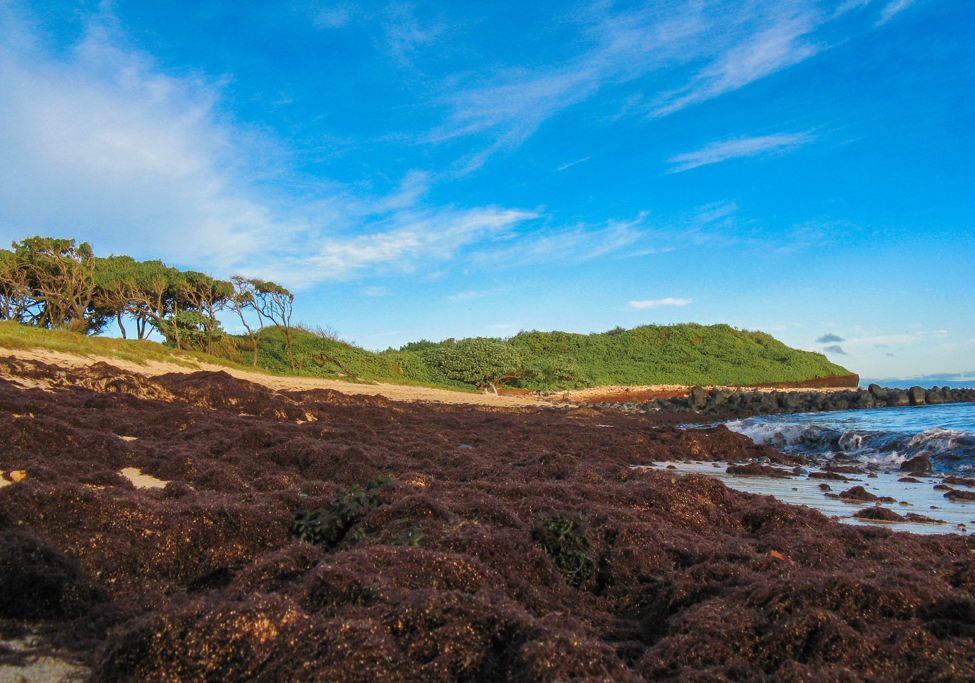
Remnants of invasive algal bloom cover a beach and rocks at Kūʻau Bay, Maui. Credit: UHM.
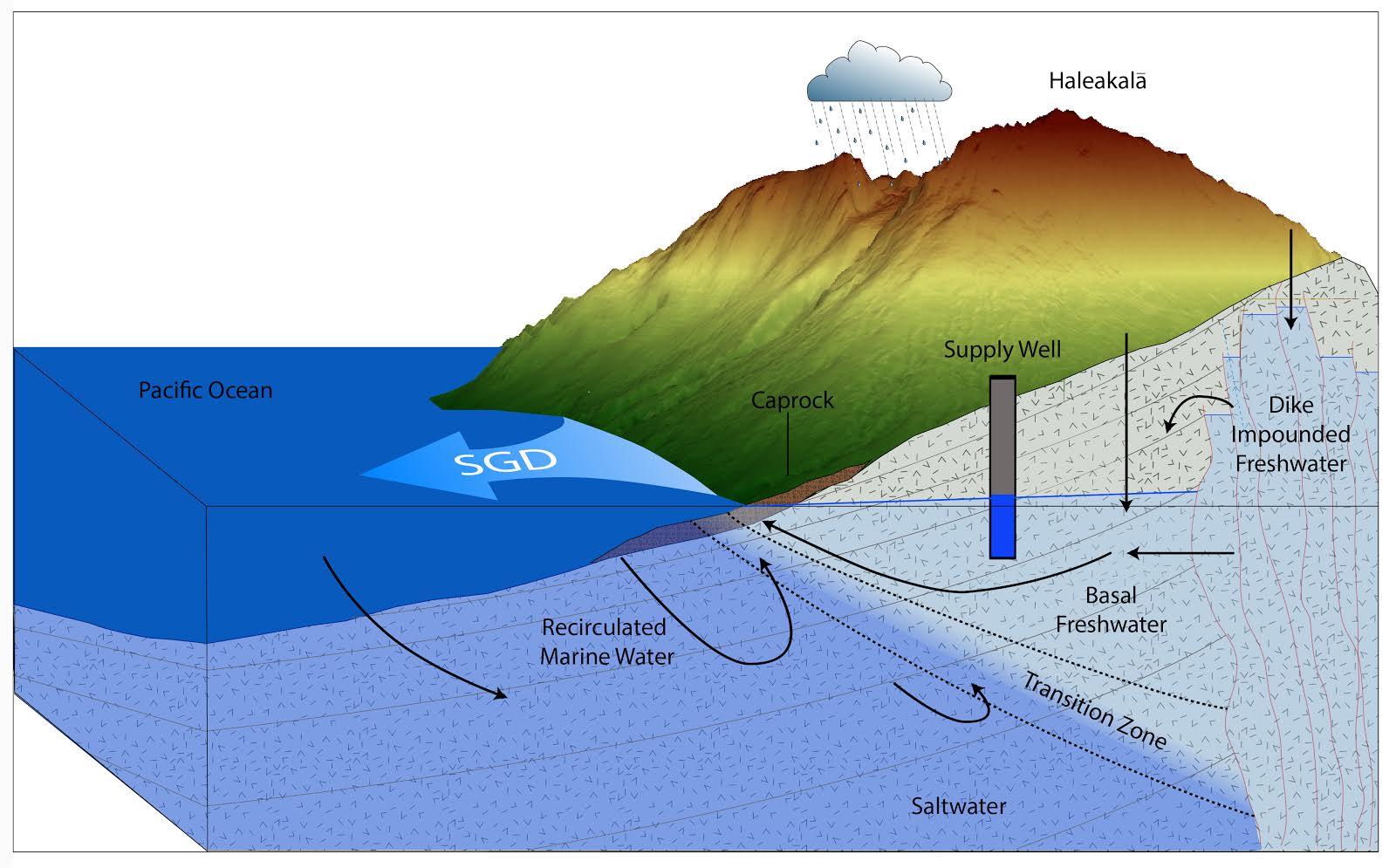
Schematic of submarine groundwater discharge. Credit: Bishop, et al. (2015)
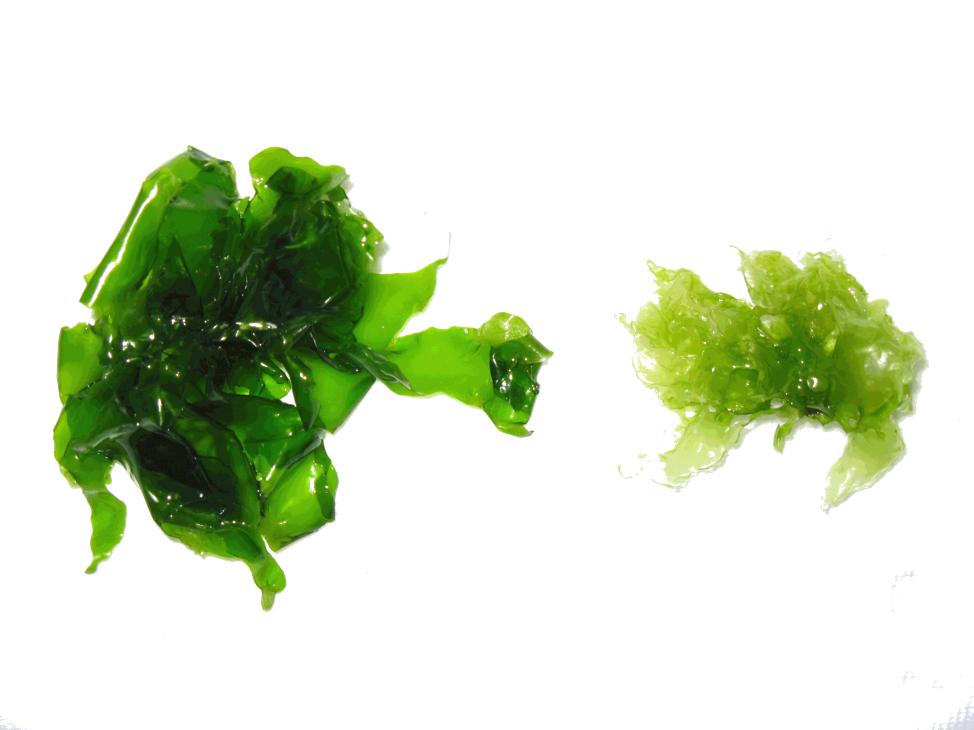
Ulva (algae) from areas with high (left) or low (right) levels of SGD-derived nitrogen. (D. Amato)
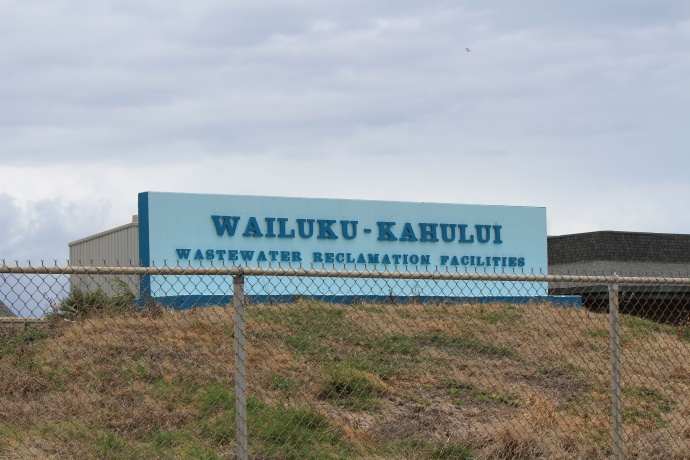
Wailuku-Kahului Wastewater Reclamation Facility in Kanahā, Maui. Photo May 2015 by Wendy Osher.
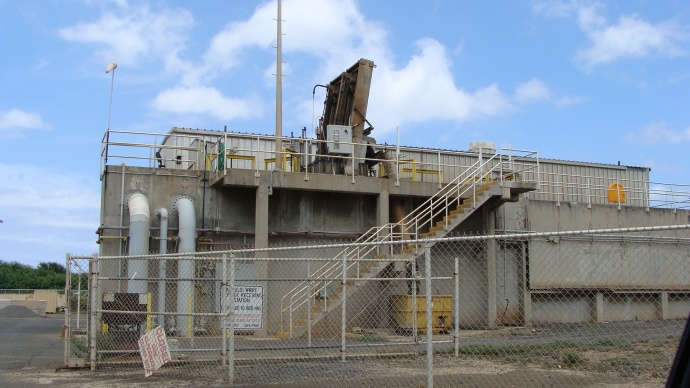
Kahului Wailuku Wastewater Treatment Plant, photo by Wendy Osher.











